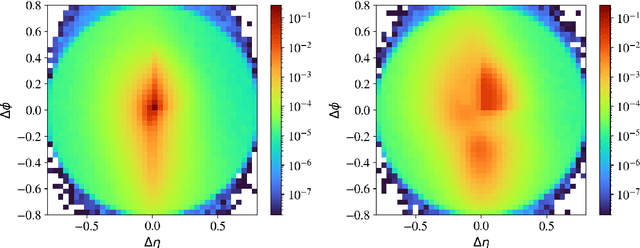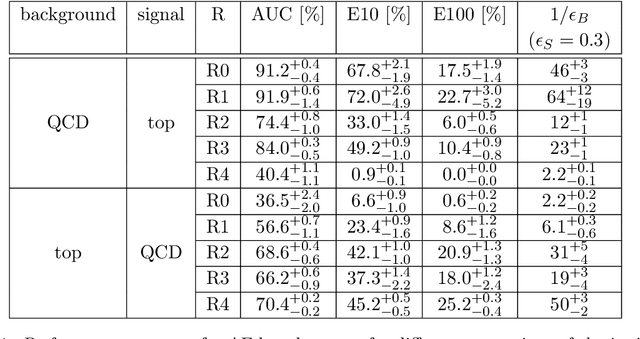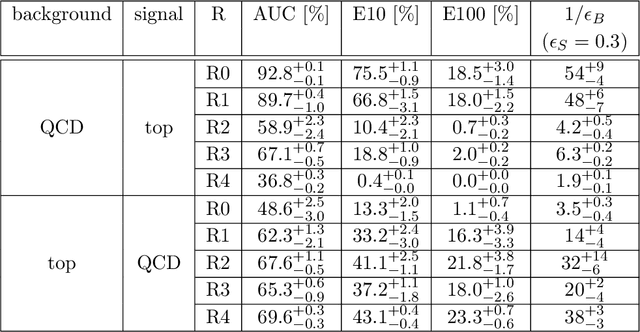Alessandro Morandini
Autoencoders for unsupervised anomaly detection in high energy physics
Apr 19, 2021



Abstract:Autoencoders are widely used in machine learning applications, in particular for anomaly detection. Hence, they have been introduced in high energy physics as a promising tool for model-independent new physics searches. We scrutinize the usage of autoencoders for unsupervised anomaly detection based on reconstruction loss to show their capabilities, but also their limitations. As a particle physics benchmark scenario, we study the tagging of top jet images in a background of QCD jet images. Although we reproduce the positive results from the literature, we show that the standard autoencoder setup cannot be considered as a model-independent anomaly tagger by inverting the task: due to the sparsity and the specific structure of the jet images, the autoencoder fails to tag QCD jets if it is trained on top jets even in a semi-supervised setup. Since the same autoencoder architecture can be a good tagger for a specific example of an anomaly and a bad tagger for a different example, we suggest improved performance measures for the task of model-independent anomaly detection. We also improve the capability of the autoencoder to learn non-trivial features of the jet images, such that it is able to achieve both top jet tagging and the inverse task of QCD jet tagging with the same setup. However, we want to stress that a truly model-independent and powerful autoencoder-based unsupervised jet tagger still needs to be developed.
Nonparametric Density Estimation from Markov Chains
Sep 08, 2020



Abstract:We introduce a new nonparametric density estimator inspired by Markov Chains, and generalizing the well-known Kernel Density Estimator (KDE). Our estimator presents several benefits with respect to the usual ones and can be used straightforwardly as a foundation in all density-based algorithms. We prove the consistency of our estimator and we find it typically outperforms KDE in situations of large sample size and high dimensionality. We also employ our density estimator to build a local outlier detector, showing very promising results when applied to some realistic datasets.
 Add to Chrome
Add to Chrome Add to Firefox
Add to Firefox Add to Edge
Add to Edge